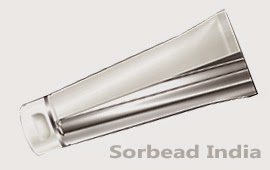Laminated tubes are used worldwide in the packaging industry as
they are economical and highly functional as far as securing the contents of a package
are concerned. Aluminum tubes are
the most popular types of laminated packaging tubes that are used in several
sectors, including food, cosmetics, pharmaceuticals and oral care applications.
One of the surprising facts that have come up recently suggests that the oral
care industry contributes towards more than 70 percent of the total production
of these packing aluminum tubes.
Advantages and features of using Laminated Tubes
- These have the capability to retain
softness, flexibility and smoothness.
- They improve the shelf life of a product.
- They possess outstanding barrier
properties.
- Their Swiss technology reassures
better fusion between the package contents.
- They provide an exceptional seal
that prevents any dust particles from entering the package.
- They have a quick filling line
speed.
- They have exceptional quality and
desired results.
- Even when the tube is pressed hard,
it retracts back to its original position after sometime.
- These tubes can be easily recycled, which is why they help business owners in avoiding wastage.
Laminated
aluminum tubes provide a great form of tube base, which, in turn, offers
several benefits of plastic tubes but with superior barrier properties. These
barrier properties are at par with that of metal tubes. However, the advantage
of aluminum packaging tubes over metal tubes is that they are lighter in weight
and not as expensive either. Products like ointments and toothpastes are packed
using these tubes around the world. Due to the increased demand of these tubes,
more and more manufacturers have started selling these tubes at affordable
rates to gain a profitable market share in today’s competitive market
Laminated
aluminum tubes are created by positioning some laminate material roles onto the
large machine needles. These tubes are created in different shapes and sizes to
fulfill the requirements of various industries. Pharmaceutical industries, for
instance, require small tubes while the oral care industry requires
considerably bigger aluminum tubes for packing toothpaste.
After the Aluminum Tube has been created into the desired length and shape, the tube gets transferred to the given operation. As with the plastic aluminum tubes, several heading methods are easily available. In the end, the aluminum tubes are sent to the capping station where the caps are placed. These aluminum tubes are used worldwide for the purpose of packaging all kinds of contents.





